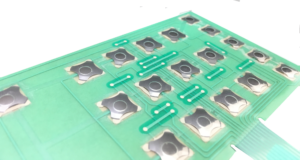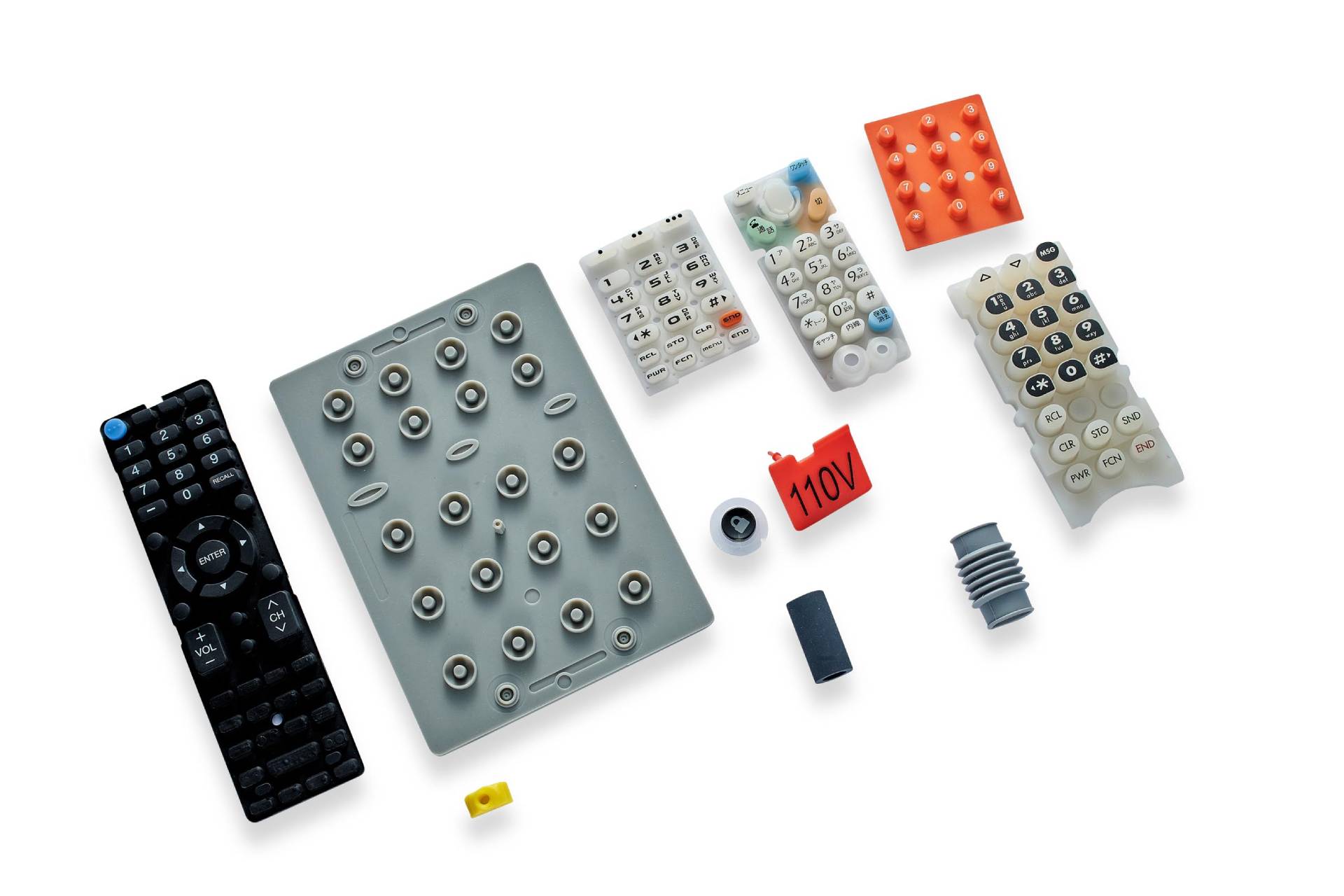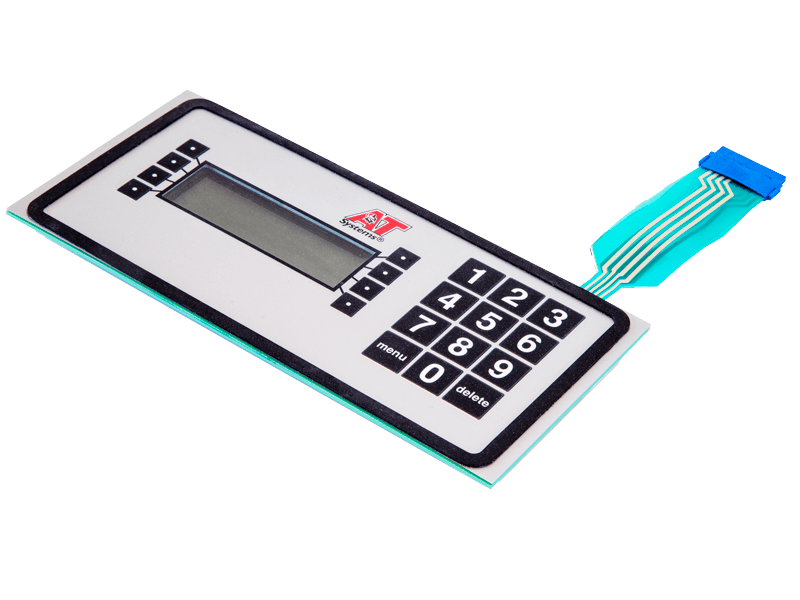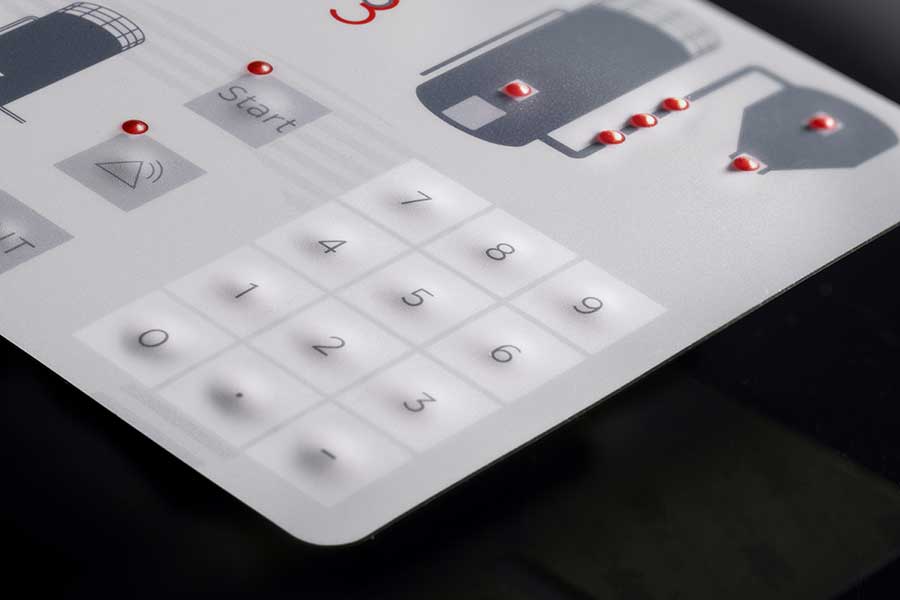Everything About Membrane Layer Switch: Comprehending Its Style and Functionality
When you think regarding the control user interfaces in contemporary gadgets, membrane buttons commonly come to mind. Let's explore what sets membrane layer switches apart from various other control systems.
What Are Membrane Buttons?

Their smooth nature makes them simple to clean and immune to dirt and dampness, an essential function in many settings. Membrane buttons can likewise be personalized pertaining to shape, dimension, and graphics, allowing suppliers to create one-of-a-kind interfaces customized to particular products. Plus, they're light-weight and thin, which assists in decreasing the general mass of tools. On the whole, membrane buttons play a substantial duty in improving individual experience across a vast array of applications.
How Membrane Layer Switches Over Job
When you push a key on a membrane layer button, it activates a straightforward yet efficient device. membrane switch manufacturer. The leading layer, typically made of adaptable product, pushes down onto a conductive layer under it.
You'll discover that the responsive comments varies based on the switch style, supplying either a soft click or a more pronounced reaction. As soon as you release the key, the membrane returns to its original placement, reopening the circuit and stopping the signal. This process happens practically instantaneously, ensuring a responsive individual experience.
Membrane layer switches are prominent as a result of their longevity and resistance to dirt and moisture, making them optimal for numerous applications, from home appliances to medical devices. Comprehending this procedure assists you value their extensive use.
Trick Components of Membrane Switches
Understanding the crucial components of membrane buttons is basic for understanding their capability and layout. The safety layer shields versus ecological elements and use, prolonging the switch's lifespan. By comprehending these parts, you'll acquire understanding into just how membrane switches over run and their significance in various applications.
Products Made Use Of in Membrane Change Layout
The performance and longevity of membrane switches over heavily rely on the products used in their style. You typically experience polyester and polycarbonate as primary substrates as a result of their excellent toughness and versatility. These products withstand scrapes and chemicals, making them ideal for demanding settings.
The conductive layers frequently use silver or carbon, chosen for their integrity and conductivity. membrane switch manufacturer. Silver provides remarkable performance, while carbon is a cost-effective option. For the overlay, you could consider a matte or shiny coating, depending on your aesthetic demands and user experience
Adhesives play a necessary duty also; they bond layers firmly and assure durability. Make sure to select adhesives that withstand environmental variables like temperature level and moisture. Finally, don't neglect the significance of an excellent printing technique for graphics, as it improves both performance and aesthetic charm. Selecting the ideal materials will assure your membrane button stands the test of time.
Design Factors To Consider for Membrane Layer Buttons
While making membrane layer switches, it's essential to take right into account numerous variables that affect their performance and user experience. Beginning by concentrating on the format and switch size; ensure they're user-friendly and easy to navigate. Consider the responsive responses you want to supply-- will users need a visible click or a softer touch? Furthermore, consider the products you'll make use of, as they'll impact durability and looks.
Verify your style suits ecological factors, like dampness or temperature level variants, which might impact efficiency. By thoroughly thinking about these aspects, you'll produce a membrane switch that enhances use and fulfillment.
Applications of Membrane Layer Buttons
Membrane buttons are flexible elements found in numerous applications, from commercial tools to customer electronics. You'll see their impact in equipments that call for sturdy interfaces and in tools that gain from smooth designs. Recognizing these applications aids you appreciate the functionality and usefulness of membrane layer switches in day-to-day innovation.
Industrial Devices Use
When you're looking to improve the functionality of industrial devices, membrane buttons use a dependable solution that integrates durability with user-friendly style. These switches are ideal for harsh environments, offering resistance to dust, dampness, and chemicals. You'll locate them in control panels for making equipments, HVAC systems, and clinical gadgets, where accuracy and responsiveness are essential. Their low account suggests they fit flawlessly right into numerous equipment, conserving important room while keeping simplicity of use. With personalized graphics and backlighting choices, you can create an intuitive interface for operators, improving performance and safety. Plus, their long lifespan reduces maintenance prices, making them a clever financial investment for your industrial applications. Embrace membrane layer buttons to enhance your operations and boost general performance.
Consumer Electronics Combination
In the domain name of customer electronics, membrane layer switches play an important duty in enhancing customer interaction and tool performance. Membrane buttons also guarantee longevity and resistance to dust and dampness, expanding the lifespan of your electronic devices. By selecting membrane layer buttons, you improve not simply the performance however also her response the design of your tools, making day-to-day interactions smooth and delightful.
Advantages and Negative Aspects of Membrane Layer Switches
While membrane switches use a series of benefits, they additionally come with some disadvantages that you should consider. One significant advantage is their small design, making them optimal for space-constrained applications. They're additionally cost-effective, providing a sturdy service with a reduced manufacturing price. Furthermore, their seamless surface area is simple to clean, boosting health in settings like health centers.

Nevertheless, there are disadvantages. Membrane switches can have a much shorter lifespan compared to mechanical switches, particularly under hefty usage. review They can likewise be much less tactile, which might affect user responses throughout operation. Furthermore, if harmed, repairing them can be challenging and frequently requires full replacement. Inevitably, their sensitivity to extreme temperature levels and environmental conditions might restrict their effectiveness in particular setups. Stabilizing these advantages and disadvantages will aid you figure out if membrane layer buttons are the right fit for your job.
Frequently Asked Inquiries
How Much Time Do Membrane Layer Changes Normally Last?
Membrane layer changes normally last between 5 to 10 years, depending upon usage and environmental problems. You'll wish to assess factors like wear, direct exposure to moisture, and temperature variations to assess their longevity properly.
Can Membrane Layer Switches Over Be Personalized for Particular Layouts?
Yes, you can tailor membrane layer buttons to fit particular designs (membrane switch manufacturer). You'll have the flexibility to choose colors, forms, and layouts that match your project's requirements, guaranteeing they mix effortlessly with your general aesthetic
What Is the Expense Array for Membrane Layer Switch Production?
The expense variety for membrane layer switch production normally falls in between $1 and $10 per unit, depending on aspects like layout complexity, quantity, and materials. You can get quotes from click to investigate producers to discover the most effective option.

Are Membrane Switches Over Water Resistant or Resistant?
Membrane layer buttons can be designed to be waterproof or resistant, relying on materials used and construction approaches. If you require them for damp environments, assure you define those needs during the design procedure.
Just How Do Membrane Changes Compare to Typical Switches?
Membrane buttons are normally thinner and more adaptable than conventional buttons, providing a streamlined layout. They're typically easier to clean up and incorporate, however could not supply the responsive responses you're used to with mechanical alternatives.
Final thought
